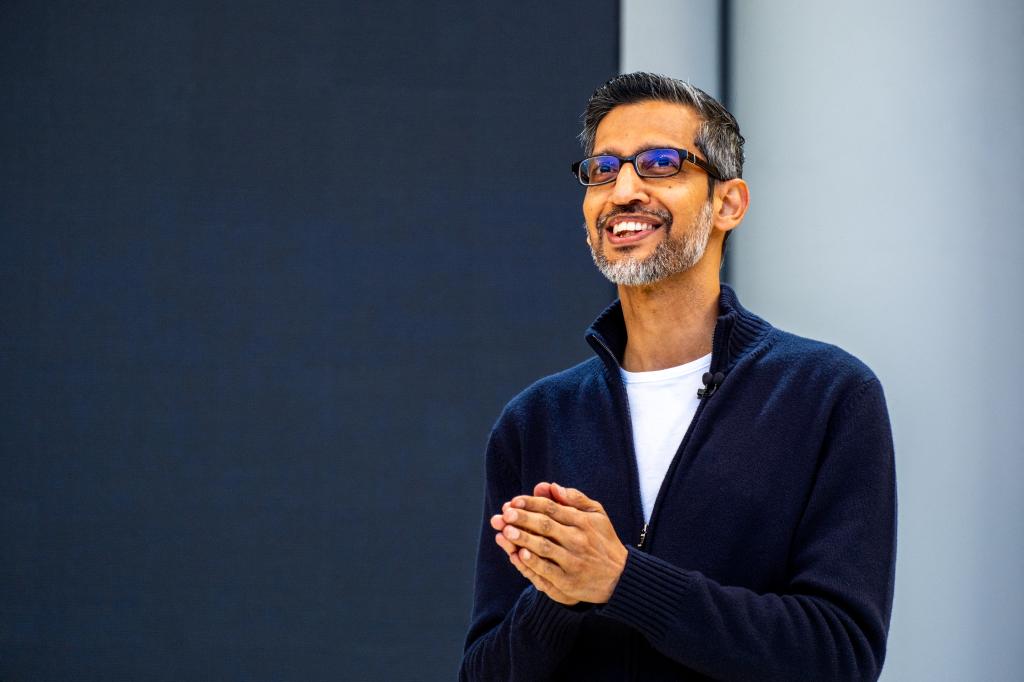Major news outlets are in crisis mode as artificial intelligence chatbots pushed by Google and other Big Tech giants crush website traffic.
Google has rolled out an “AI Overviews” feature in its search engine that demotes traditional “blue links” to other sites in favor of auto-generated summaries. Last month, the search giant rolled out “AI Mode” – which is expected to make the problem even worse by respond to search queries with chatbot-style conversations and few direct links.
Nicholas Thompson, the CEO of news outlet The Atlantic, told employees earlier this year that they should assume traffic from Google will drop toward zero over time, according to a report from the Wall Street Journal on Tuesday.
“Google is shifting from being a search engine to an answer engine,” Thompson told the Journal. “We have to develop new strategies.”
Dwindling traffic is hurting revenue for cash-strapped newsrooms and fueling layoffs. When Business Insider slashed 21% of its staff in a newsroom-wide culling last month, its top boss Barbara Peng said the move was meant to help “endure extreme traffic drops outside of our control.”
Traffic to Business Insider’s website plunged by a whopping 55% from April 2022 to April 2025, according to data from analytics sites Similarweb cited by the Journal.
HuffPost has also lost more than half of its traffic over the same period, the data showed, while the Washington Post – another newsroom racked by job cuts – has lost nearly half its search audience.
The rollout of AI-generated summaries in place of links “is a serious threat to journalism that should not be underestimated,” Washington Post CEO William Lewis said.
Google did not immediately return a request for comment.
Despite the traffic losses, Google has claimed that it is still funneling traffic to news sites through search.
Critics, such as the News Media Alliance – a trade group that represents hundreds of news outlets including The Post – has warned that AI Overviews and other Google-implemented AI features will have devastating consequences for the industry.
They allege that Google and other AI giants have used news content to train their chatbots without proper credit or compensation – and then used those same products to erode traffic.
Danielle Coffey, the CEO and president of News Media Alliance, blasted Googles’ rollout of AI Mode last month as “theft.”
“Links were the last redeeming quality of search that gave publishers traffic and revenue,” Coffey said. “Now Google just takes content by force and uses it with no return, the definition of theft. The DOJ remedies must address this to prevent continued domination of the internet by one company.”
The AI push comes as Google faces intense pressure from the feds over its business model – including losses in a pair of antitrust cases brought by the DOJ that could force a breakup of the company.
US District Judge Amit Mehta is set to decide by August on how to break up Google’s illegal dominance over online search after labeling the company as a “monopolist” in an initial ruling last year. DOJ lawyers want Mehta to consider the future impact of AI when crafting remedies.
Elsewhere, Google recently lost a separate DOJ case in which it was determined to have two illegal monopolies over digital advertising technology.
In that case, US District Judge Leonie Brinkema touched on the impact to news outlets, finding that Google’s “exclusionary conduct substantially harmed Google’s publisher customers, the competitive process, and, ultimately, consumers of information on the open web.”
The remedy phase of the digital ad tech trial will begin in September.


